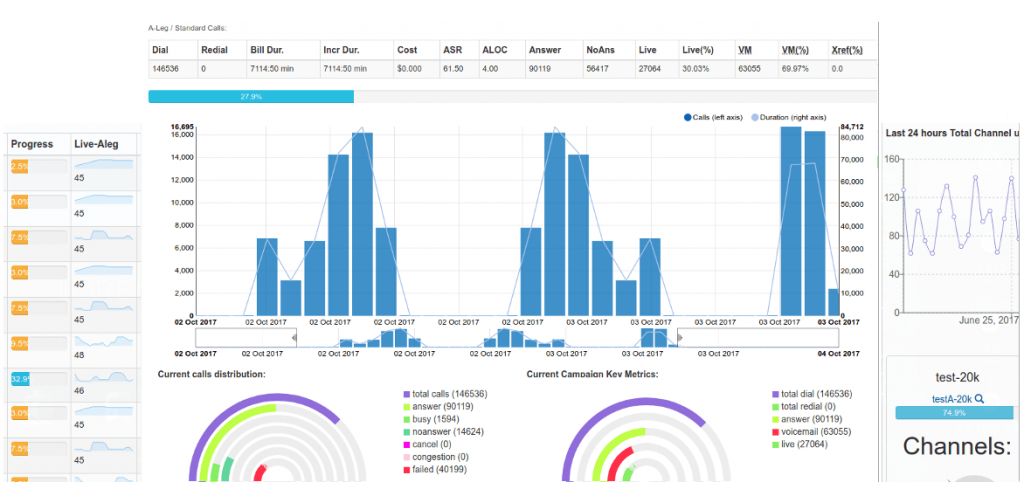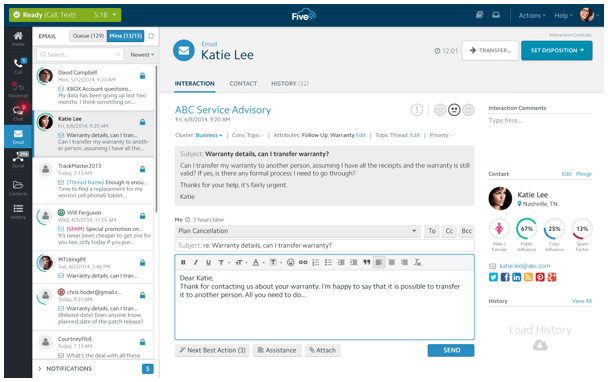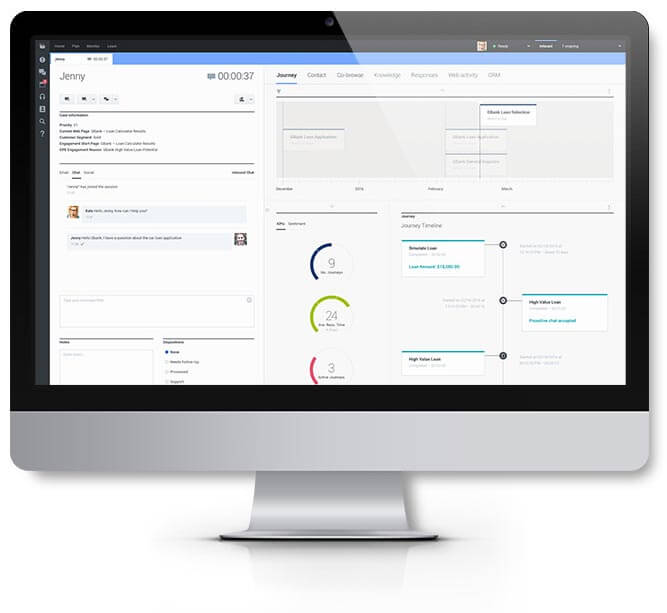
Could an investment in the right predictive dialer be the key to your success?
Marketing isn’t going to go out of style – there will always be a need for it. After all, there are very few products throughout history that have sold themselves.
Something as simple as canned food, for example, took a while to catch on. Originally used at the beginning of the 19th century as a way to feed traveling armies, it only really began to spread as it gained traction (by the middle of that century) in Europe as an exotic frippery.
While cynics, such as the redoubtable Dilbert, have always had a low opinion of marketing, today’s technologies offer companies at all stages of their existence (from startup to Coca-Cola) a range of marketing channels that can be used with increasing efficiency.
Different marketing methods each have their place according to what’s being offered. But as far as reaching potential customers directly goes, three of the most common conduits are telephone calls, emails, and social media.
Social media has always existed – gossip columns are as old as print newspapers themselves – but as a marketing tool, its effectiveness is not well-proven.
According to Hootsuite, who, one might surmise, have an active interest in pushing social media as an activity in the round, only 20 percent of all marketers can quantify social media’s effectiveness.
While some products or services find their spiritual marketing home in social media, for most organizations it remains an adjunct to overall marketing – important yet peripheral.
Older than social media, in Internet terms, at least, email campaigns live or die by their click to open rate (CTOR). Most business people get around 150 emails each day, a number rising inexorably, so email for B2B marketing/advertising purposes will become less effective: hitting the DELETE key is easier than engaging the brain to take in yet another marketing message.

So what, then, is the most effective way to reach people? The traditional phone call, as it turns out, and this is accepted by most sales professionals.
Reasons for this effectiveness are various, but one overarching feature of the call is that it can be controlled to a certain extent: either by a human operator steering a conversation, or an automated system offering choices to calls’ recipients, who choose options with keypad presses or voice responses, for example.
While cold-calling and calling clients or clients-to-be tend to put fear into the heart of all but the most dedicated salespeople, it remains (at around 6 percent or more), the most effective way to engage with customers.
The power of human interaction is indisputable. But also indisputable is the cost of employing humans to interact with others. As the old saying goes, the biggest costs to any business walk around on two legs.
Technology’s challenge, therefore, is to make human-centric interaction over the phone less costly.
Economies of scale have led us to the modern call center’s existence. And to keep costs low, but human interaction levels high, the technology deployed in a modern calling system helps enterprise do the following:
- Cut wasted time waiting for prospects to answer calls
- Pre-screen prospects using automated voice calls (synthesized or recorded by voice talent)
- Discern the difference between a human answering and an answering machine, and respond appropriately
- Ensure maximum call center staff utilization (put simply, not letting staff waste time)
- Provide customers with self-service options, if necessary or desired
- Integrate with existing CRM systems that are either ingrained technology or those which can provide further information to different parts of the organization
- Broadcast messages (of any description – not just sales) easily
- Automate billing
- Use SMS in support of voice services
- Enable single service providers to manage multiple clients (run a call center that contains several companies all working on the same software/hardware platform)
Call management software and hardware choices, therefore, can determine which of the above are possible, and which can be given appropriate emphasis according to need.
Anyone who reads about, and knows more than a little about technology, will recognize many of the technologies that call center management systems use. Each system offers specific options based on its underlying technologies.
Here are three providers we feel you might consider if you are thinking about changing your call technology provision, or starting out down the voice-based marketing road:
DIALERAI

DialerAI is a new product to reach the market designed specifically with the outbound call market in mind. Its applications move beyond a commercial marketing facility and include use in political or market polling, with a host of options that allow call automation – both on the part of outbound calls as well as recipient interactions.
The platform is built on open source technologies and therefore comes with the guarantee of a massive existing user base and wealth of experience that the developers have drawn from.
DialerAI is multi-tenant auto-dialer software which dials automatically, then plays pre-recorded or text-to-speech messages, capturing responses with DTMF touch tones and transferring contacts to a live agent, if appropriate. The system includes answering machine detection and the ability to drop a different message in ‘after the beep’.
DialerAI’s predictive dialing system is able to vary call rates depending on the number of agents available. This ensures no prospects get calls when no agents are available, or worse, leaving prospects on hold.
DialerAI is designed to be a cloud-based solution (in the main) with pricing based on usage and open concurrent open comms channels. Its uses are not confined to particular areas of commerce, with political pollsters as well as financial concerns finding more than ample power and capabilities in the platform.
The solution is a BYOVOIP model (bring your own voice over IP), which allows companies using the software to save by sourcing their own VOIP provider, rather than having it bundled as a costly extra. Read their full profile…
FIVE9

Five9’s claim is that it can make call agents “300 percent more productive”, by means of its offering.
The solution covers both inbound and outbound call management and is a proprietary code base. Five9’s integration role call is impressively widespread, with Salesforce, Oracle and Netsuite co-working quite happily.
The solution is 100 percent cloud-based, so no external VOIP system or secondary provision is required. This makes it ideal for small companies wishing to test their toes in the call-based marketing waters. The solution is, however, very scalable, and the company offers pricing reduction to US$165 per month per agent for installations of more than ten agents (on top of a US$250 setup fee).
As well as a host of features that will save call center staff a great deal of time waiting for connections (or listening to answer machine messages), the system can route calls to specific agents based on their remote selections in an interactive, automated call, their history with the company and their level of previous escalation.
Personalisation is increasingly important to customers in a world where automation can so easily reduce their personal requirements to a string of binary.
GENESYS

Of the three companies featured here, Genesys is by far and away the largest, with offices in the US, Europe, Africa and the APAC region, including a presence in Australia, Malaysia, and India.
They offer several products, including offerings based on customer and employee engagement, as well as business optimization. The various options allow their customers a degree of customization so that they pay for only the elements they will actually utilize.
Genesys’s headline at present is Kate, a piece of software that “combines artificial intelligence, bots, machine learning, micro-apps and more, [to] deliver personalized, proactive and predictive experiences.”
By using sentiment analysis and previous interactions with a customer, the Kate artificial intelligence (AI) purports to guide call agents with what to do next – either escalate the call, or present offers or specials that the AI thinks will be attractive.
The company’s three cloud-based offerings, PureCloud, PureConnect and PureEngage (the latter being offered as either on-premises or cloud-based) offer a range of product according to business size.
PureCloud is demonstrated at regular intervals online and is designed for an out-of-the-box implementation with little installation time, whereas its largest sibling is destined for the full-scale enterprise, or the call center owner/operator.
*Some of the companies featured in this article are commercial partners of Tech Wire Asia
READ MORE
- Ethical AI: The renewed importance of safeguarding data and customer privacy in Generative AI applications
- How Japan balances AI-driven opportunities with cybersecurity needs
- Deploying SASE: Benchmarking your approach
- Insurance everywhere all at once: the digital transformation of the APAC insurance industry
- Google parent Alphabet eyes HubSpot: A potential acquisition shaping the future of CRM
